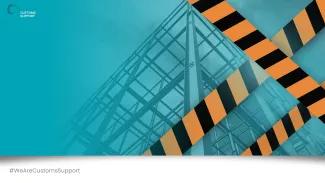Which commodities are affected by the sanctions on Russian iron and steel?
The two main HS tariff chapters that are affected by the sanctions on Russian are:
- 72 – Iron and steel.
- 73 – Articles of iron and steel.
It is important to ensure that you are using the correct customs goods classification so that your company is not exposed to the risk of illegal importation of Russia-originating goods.
Note that processed items – where the goods change classification or origin through assembly, manufacture, or alteration – must also contain no sanctioned Russia-originating components.
What do I need to prove there are no Russia-originating iron or steel components in my imported goods?
For goods that are processed, you must submit one or more Mill Test Certificate (MTC). This must contain information relative to the condition of your goods:
Semi-finished products
- The name of the production facility.
- The name of the country associated with the “heat number” (the country of smelting).
- Classification of the product, with at least the first six digits of the HS code.
Finished products
- The name of the production facility.
- The name of the country associated with the “heat number” (the country of smelting).
- Classification of the product, with at least the first six digits of the HS code.
- The name of the country and facility where the following processing operations were completed, as relevant:
- Hot rolling
- Cold rolling
- Metal coating:
- Hot dipping
- Electrolytic
- Organic
- Welding:
- ERW
- SAW
- HFI
- Laser
- Piercing or extrusion
- Drawing or pilgering
The importer is responsible for the information that is submitted on the Mill Test Certificate during the import clearance process.
Note that further information, such as date(s) of transport, could be requested upon investigation by customs.
Perform your due diligence to prevent circumnavigation issues
Checking with your suppliers that they do not use sanctioned Russia-originating iron and steel during the manufacture of their products is only the first step. You must perform your due diligence and ask your suppliers to do the same.
It is important to note that certificates of origin, EUR1 documents and other documents for non-+preferential and preferential origin are not accepted as proof of non-Russia origin due to the legal acceptance of origin change when raising these documents.
Furthermore, do not assume that an item is legal because the majority of composition is from legal countries, or because an item of majority origin was used in the processing stage before the item that you are buying.
For example, consider the following chain of processing:
- Steel of commodity code 7207 is exported from Russia to country X.
- In country X, the goods are processed into steel rods of code 7215 and the country of origin changes to X.
- These rods are exported to country Y, where they are split into steel wire of code 7223, and then sold into the EU or UK.
Despite being of X-origin, the steel has originated in Russia and the import of these items is prohibited.
Importing goods that could be affected by sanctions on Russian iron and steel?
If you are not working with us already and need help from a customs consultant regarding sanctions on Russian iron and steel, contact us for assistance.













